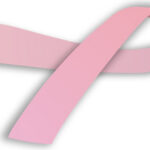What is basal cell carcinoma?
I have a basal cell carcinoma on my forehead at my hairline. This is not my first one; I’ve had two that were removed. I will go soon to have this one removed also. Basal cell carcinoma is the best kind of cancer to have, if you have to have it, because it is easily treated and it is the least likely to be fatal. It is important they be removed because they can spread to the surrounding tissue and to the bone. It usually takes years fro basal cell carcinoma to develop. They are most commonly seen on senior citizens, but they can develop on anyone of any age. I believe I get them so much because of all the years I was out in the sun without protection. I have been burned a lot from the sun in my lifetime.
Because I had a skin cancer I keep getting them. This is common because basal cell carcinomas have a high chance of coming back within 5 years. Skin cancers are usually caused by being exposed to the sun’s UV radiation for long periods. The best way to protect yourself from the UV rays is to stay out of the sun. But if you have to go out you should wear a hat and a good sun block.
Basal cell carcinomas can develop anywhere on your body that is exposed to the sun, but they are most commonly seen on the head and neck areas. If you are Caucasian and you have a basal cell tumor it could resemble a pearly white bump on your face, ears or neck; however if you are darker skinned your tumor may be black or brown in appearance. The bump may contain visible blood vessels, and if you bump it or pick at it, it may bleed. Basal cell carcinomas can also present as flat, scaly, brown patches. Over long periods of time these areas can grow up to 15 centimeters (6 inches) in diameter. There is a type of basal cell carcinoma that is quite invasive and can be easier to overlook, because it is not so obvious. It resembles a white, waxy scar. This type of skin cancer is called morpheaform basal cell carcinoma.
What causes basal cell carcinoma?
Normally we form skin cells and the new ones push the old ones to the surface to be sloughed off. This process of skin renewal is a process that is governed by our DNA. But when we have skin damage caused by the sun, our DNA becomes damaged and the skin cells grow out of control and become cancerous. It is believed that the greatest damage to the skin is done during our childhood and adolescent years. The sun damage is cumulative. The skin cancers I have now may be a direct result of my exposure to UV radiation when I was a young adolescent getting burned at the beach.
It is possible that you did everything right and you still got this form of skin cancer. People that have had radiation treatments for psoriasis, or acne; if they have had a series of head and neck X-rays, they are at risk for basal cell carcinoma, as well as other more serious forms of cancer. Arsenic is another carcinogen that the U.S. Department of Health and Human Services says the average American ingests 11 to 14 milligrams of arsenic every day. We get if from the air we breathe and the food we eat. And if you have a contaminated well, it can even be in your drinking water. Basal cell carcinoma is also reported in people who have had an organ transplant. The immunosuppressant drugs they have to take can increase their risk of cancer, which is usually much more aggressive in these patients. There are also some genetic disorders that will predispose some people to this form of skin cancer.
You are most at risk if you have fair skin and you burn easily, and if you have had at least one episode of a sunburn that caused blisters to form. The incidence of basal cell carcinoma is higher in males, but females are increasing in numbers. If a close relative has had skin cancer, you are also at risk, merely by your genetic connection.
How is basal cell carcinoma diagnosed and treated?
If you have a sore that doesn’t go away, that bleeds easily or oozes and crusts over repeatedly, it is time to go to your doctor to check it out. If you see a pearly white bump with or without blood vessels visible, or if you see a scar where you have not hurt yourself, these are all signs that you should be examined.
Your doctor will take a history and physical. He/she may want to look you all over and take some skin scrapings as well as surgically remove some tissue for biopsy examinations. Your tissue samples will be sent to a pathologist for examination to rule out or determine the presence of disease.
There are a number of treatments for basal cell carcinoma. If you have tumors that are located primarily on the surface of the skin your doctor may choose to use a scraping instrument that scrapes the skin clean and then burns the base of the tumor with an electric needle. This procedure is called electrodesiccation and curettage (ED and C).
In my case of basal cell carcinoma, which was on my face, the doctor decided to do a surgical excision. The doctor cuts out the cancer along with some of the surrounding tissue. Another form of treatment is freezing them with liquid nitrogen, which is called cryosurgery. Freezing is useful if there are multiple tumors, but the wounds are slow to heal and may also have crusting during the healing process. Another drawback is that these wounds are prone to scarring.
Laser surgery has become quite popular because there is minimal scaring and the bleeding is minimized. The tumor just vaporizes under the laser. There are some topical medications, but they are not always effective and the side effect of irritation is a real problem.
We should all protect ourselves. We can take measures that will greatly reduce our chances of developing basal cell carcinoma. Wear a sunscreen all year round. Avoid the mid day sun. The rays of the sun are strongest between 10 in the morning and 4 in the afternoon. When at a lake or the beach, be mindful that the sun reflects off the water. This is also true in the winter. You can get sunburned in the winter as well. The sun bounces off snow, sand and water.
When wearing a sunscreen, remember that they do not filter out all of the harmful UV radiation. We should be wearing a broad spectrum sunscreen with a sun protection factor (SPF) of 15 or higher. Use at least an ounce to cover your body. Make sure you cover your lips, the backs of your hands and your neck and ears. No sunscreen will fully protect you, so you should be sure to wear protective clothing. Cover your arms and legs and wear a cap or a hat to protect your face. Be sure to wear sunglasses to protect your eyes from the UV and UVB rays.
It is important to examine your skin for changes in appearance. Look for new growths or changes in birthmarks, moles and freckles. Check everywhere on your body. Don’t just check your face, but check your scalp and your ears also, and don’t forget you check your buttocks as well as your legs. It is thought that vitamin D is helpful in preventing certain kinds of cancers, so it is important to get your dairy intake in the form of milk, yogurt and cheese, as well as taking your vitamins.
Source: Mayo Clinic information page


